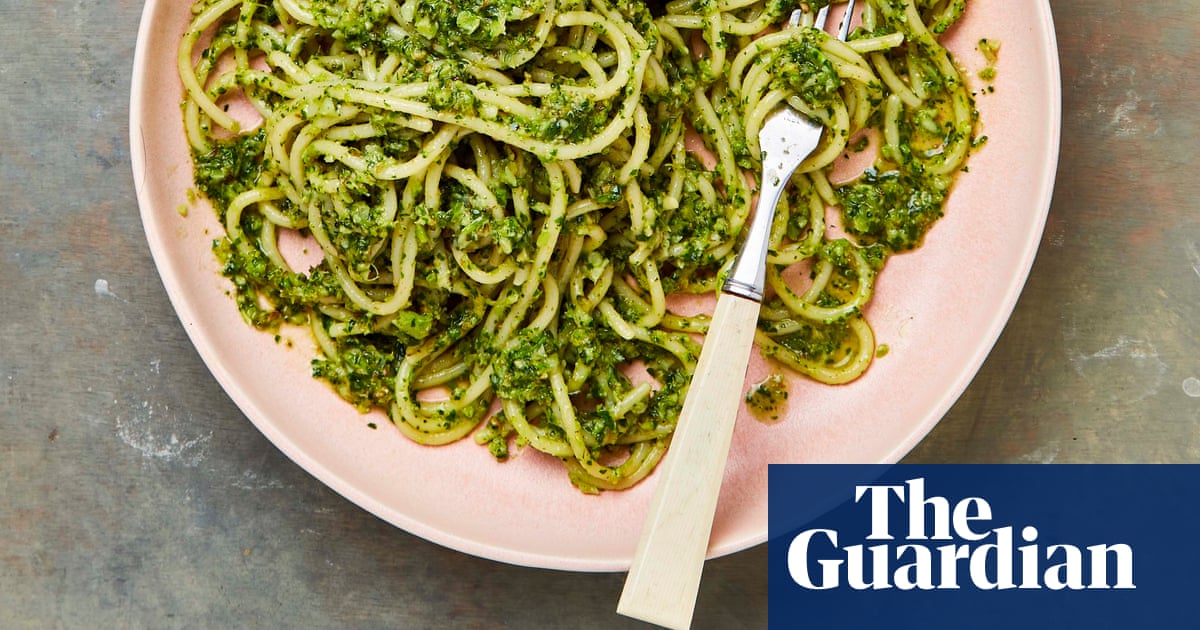What sauces and dressings can I make to rejuvenate weekday meals?Sauces and dressings give dinner life, making even the simplest meals taste better. The formula, says Gurdeep Loyal, author ofFlavour Heroes(published in June), goes something like this: “You need two things: a really good fat and a really good sour.” Sure, that fat could be oil, but it doesn’t have to be. “It could be an egg yolk, it could be avocado, but if it’s oil, go for a flavoured one,” Loyal says, and in place of the usual acid suspects (vinegar or citrus), try the likes of gherkins, capers or preserved lemons instead. “My go-tos are preserved lemon whizzed up with a bit of their brine, some garlic-infused olive oil and maple syrup. Or avocado blitzed with gherkins, gherkin brine, a bit of sugar, if you want, and perhaps herbs such as chives or tarragon. Or chilli-infused olive oil blitzed with a teaspoon of tamarind.” These powerhouses are a dream on pretty much anything, he says, from a roast kale salad with chickpeas to baked butter beans or even as a dip for pizza crusts.
For William Gleave, chef-patron ofSargassoin Margate, meanwhile, “Something with anchovies is always nice, because it goes with so many things”. For him, a “classic stolen/borrowed from the River Cafe” comes out tops: “It’s essentially a dressing with lots of chopped anchovy, grated garlic, red-wine vinegar, lemon juice, oil, black pepper and chilli flakes,” which is to say it’s bright, umami-rich and versatile. “Spoon that over everything from grilled fish to lamb or pork to crunchy veg, and it will feel as if you’ve put in a load of effort, even though it’s super-simple.”
Another shortcut to big flavour iszhoug, says Marc Summer, founder ofBubala, which has just opened a third restaurant in London’s Kings Cross. “Whizz up a load of different herbs – coriander, parsley, mint – with oil, garlic andhawaij[a Yemeni spice blend with lots of black pepper, cumin and coriander].” That will transform meals in seconds: “Add it to pasta for an amazing herby sauce, or to fried onions, much as you might a curry paste.”
Summer is also a big fan of crunches, especially when apricots are involved. “Make it as you would a chilli crunch, with lots of fried shallots, garlic and Sichuan peppercorns, then add hot oil, dried apricots and harissa for a really amazing, smoky-sweet oil.” Drizzle over yoghurty roast carrots or blanch some noodles, add tahini and top with the crunch: “That’ssotasty.” And remember, it’s the small things that count, so while the harissa’s out, Summer suggests combining it with honey and using as a marinade for vegetables before roasting: “That adds flavour quickly and puts a stop to same-old weekday meals.”
Tahini sauce, meanwhile, is Xanthe Ross’s salvation’: “It feels indulgent,” says the author ofStay for Supper, “and it’ll instantly jazz up roast veg and salads, or use it as a dip.” You’ll most likely have all the ingredients (tahini, lemon, olive oil, sometimes honey and water) knocking around, anyway. That said, you can’t go far wrong with a classic vinaigrette, either, but mix up the vinegar element to keep things interesting. “It’s hard to make in small quantities, so have a batch in the fridge for the week,” she says. “That’s good on so many things beyond a green salad, such as tomatoes on toast for lunch, although the French might hate me for saying so.”
Got a culinary dilemma? Emailfeast@theguardian.com
